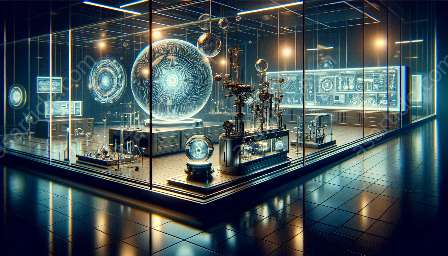As technology advances, the use of holography in non-destructive testing has gained significant attention. This topic cluster explores the applications and benefits of holography in non-destructive testing, shedding light on its pivotal role in ensuring structural integrity and safety across various industries. We will delve into the principles of holography, its compatibility with optical engineering, and its real-world applications.
The Principles of Holography
Holography is a technique that allows the recording and reconstruction of the complete wavefront of light, including its intensity and phase. It operates on the principle of interference to capture and display three-dimensional information. Holography differs from conventional photography and imaging methods as it records and reconstructs both amplitude and phase information of light. This unique characteristic makes holography a valuable tool in non-destructive testing, providing detailed and comprehensive representations of objects and structures.
Holography and Optical Engineering
Optical engineering plays a crucial role in the development and advancement of holography. The interaction between holography and optical engineering enables the creation of sophisticated holographic systems that are utilized in non-destructive testing. Optical engineering principles are applied to design and optimize the optical components and systems used in holography, ensuring high-quality holographic imaging and precision. The seamless integration of holography and optical engineering has resulted in innovative solutions for non-destructive testing in various industries.
Applications of Holography in Non-Destructive Testing
The marriage of holography and non-destructive testing has unlocked a myriad of applications across different sectors. In the aerospace industry, holography is used to inspect aircraft components for defects without causing any damage, ensuring the safety and reliability of the aircraft. In the automotive sector, holographic non-destructive testing is employed to assess the structural integrity of critical components, contributing to the overall safety of vehicles. Additionally, holography is utilized in the medical field for non-destructive testing of biomedical devices and implants, offering a non-invasive method for evaluating their quality and performance.
The Advantages of Holography in Non-Destructive Testing
Holography in non-destructive testing provides numerous advantages, including the ability to examine complex geometries and internal structures without interfering with the integrity of the object. It enables precise measurements and detailed defect analysis, leading to enhanced accuracy in quality assessment. Moreover, holographic non-destructive testing is non-contact, making it suitable for fragile or sensitive components that cannot be subjected to traditional testing methods. By leveraging holography, industries can ensure the safety, reliability, and longevity of their products and infrastructure.
Future Prospects and Innovations
Looking ahead, the integration of holography in non-destructive testing is poised for further advancements and innovations. Researchers and engineers are exploring the potential of digital holography and advanced imaging techniques to enhance the capabilities of non-destructive testing. Additionally, the integration of artificial intelligence and machine learning with holographic data analysis holds promise for more efficient and accurate defect detection in non-destructive testing applications. As technology continues to evolve, holography will play an increasingly vital role in ensuring the structural integrity and safety of diverse materials and structures.

